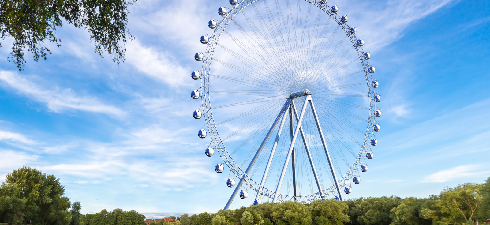- Albanian
- Arabic
- Belarusian
- Bengali
- Czech
- English
- French
- German
- Hebrew
- Hungarian
- Indonesian
- irish
- Italian
- Japanese
- kazakh
- Persian
- Russian
- Thai
- Uzbek
- Vietnamese
Exploring Different Types of Roller Coasters and Their Unique Features
Exploring the Thrill A Journey Through Roller Coaster Types
Roller coasters have long been emblematic of thrill-seeking adventure. Their clattering tracks, dizzying heights, and breathtaking speeds beckon adrenaline junkies from all walks of life. With a variety of designs and engineering marvels, roller coasters come in different types, each offering a unique experience. Let's take a closer look at the fascinating world of roller coaster types.
1. Steel Roller Coasters The Modern Marvels
Steel roller coasters are known for their smooth rides and intricate designs. They often boast steep drops, inversions, and high-speed twists. One of the most popular types of steel coasters is the looping coaster, which features multiple vertical loops that leave riders momentarily weightless. Iconic examples include “The Smiler” in Alton Towers, known for its impressive 14 inversions, and “Millennium Force” at Cedar Point, celebrated for its majestic height and speed.
Another innovation in steel coasters is the inverted coaster, where riders are suspended below the track. This design allows for a unique perspective of the ride, as thrill-seekers soar through loops and sharp turns. Coasters like “Batman The Ride” provide a thrilling experience, giving riders the sensation of flying through the air.
2. Wooden Roller Coasters The Classic Experience
Wooden roller coasters evoke a sense of nostalgia, reminiscent of the golden age of amusement parks. Known for their unmistakable wooden structures and more traditional design, these coasters provide a different experience compared to their steel counterparts. The rickety feel combined with the roller coaster's natural sway adds to the adrenaline rush.
Notable wooden coasters include “Coney Island Cyclone,” one of the oldest and most famous wooden coasters, which has been thrilling riders since 1927. Another classic is “The Beast” at Kings Island, boasting the title of the world’s longest wooden roller coaster. The combination of steep drops and sharp turns makes wooden coasters a must-ride for enthusiasts.
rollercoaster types

3. Launch Coasters Taking Off at Full Speed
Unlike traditional coasters that rely on lift hills, launch coasters catapult riders directly to high speeds from the get-go. This type of coaster utilizes various propulsion methods, such as magnetic launch systems or pneumatic systems, to accelerate riders quickly. The thrill of a sudden takeoff provides an exhilarating alternative to the slow build-up of traditional roller coasters.
“Dodonpa” in Japan, known for being one of the fastest roller coasters in the world, launches riders from 0 to 107 miles per hour in just 1.8 seconds! Other popular launch coasters include “Intimidator 305” and “Top Thrill Dragster,” both offering thrilling experiences that leave riders breathless.
4. Hybrid Coasters The Best of Both Worlds
Hybrid coasters merge elements of both wooden and steel roller coasters, resulting in a unique ride experience. Built with a wooden structure yet featuring steel track elements, these coasters often provide the nostalgia of a wooden ride while incorporating the smoothness and inversions of steel.
The “Steel Vengeance” at Cedar Point is a prime example of a hybrid coaster, boasting record-breaking height and airtime hills while offering the rough and exciting feel of a wooden ride. Such innovations continue to push the boundaries of roller coaster design, appealing to a wider audience of thrill-seekers.
Conclusion
Roller coasters represent the pinnacle of amusement park excitement, evolving through time and technology to enchant riders with new experiences. Whether it's the smoothness of steel, the nostalgic charm of wood, explosive launches, or the innovative combination of both, the variety of roller coaster types ensures that there’s something for everyone. So next time you’re at an amusement park, take a moment to appreciate the engineering marvels that bring exhilaration to life—and perhaps even muster the courage to hop on your favorite coaster. Happy riding!
-
Flume Ride-Hebei Zhipao Amusement Equipment Manufacturing Co., Ltd.|Thrilling Water Attraction&NIST Safety StandardsAug.01,2025
-
Double Ferris Wheel Sale | Premium Custom RidesJul.31,2025
-
Flume Ride-Hebei Zhipao|Water-Based Attraction, Safety Standards, High-Speed DescentJul.31,2025
-
Flume Ride: Thrilling Water-Based Adventure & Advanced Engineering - Hebei ZhipaoJul.31,2025
-
Flume Ride-Hebei Zhipao Amusement Equipment Manufacturing Co., Ltd.|Thrilling Water Attraction&Customizable DesignJul.30,2025
-
Flume Ride - Hebei Zhipao Amusement Equipment | Water Coaster, Thrilling DescentJul.30,2025
